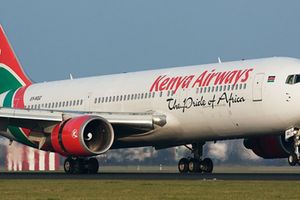What ails fertiliser bulk procurement system faces hurdles

Since more than 90 per cent of fertilisers on sale in Tanzania are imported, urban centres are only entry points before storage and distribution. PHOTO|FILE
What you need to know:
Tanzania Fertiliser Regulatory Authority (TFRA) econometrician Ban Nkonya warns that unless the challenge is tackled, farmers will be uncertain about getting fertilisers.
Dar es Salaam. The fertiliser bulk procurement process faces obstacles, the regulator says, as retailers continue buying the commodity from wholesalers at retail indicative prices.
Tanzania Fertiliser Regulatory Authority (TFRA) econometrician Ban Nkonya warns that unless the challenge is tackled, farmers will be uncertain about getting fertilisers.
“The new indicative price is more transparent and enables retailers to know the prices at which they can buy from wholesalers and sell it profitably,” he said.
Explaining he said that in the indicative pricing structure, more margins have been put towards rural areas.
That places the fertiliser market where it is supposed to be: in rural areas.
Since more than 90 per cent of fertilisers on sale in Tanzania are imported, urban centres are only entry points before storage and distribution.
He said for the distributor and wholesaler to get profits, they have to transport the fertiliser in bulk to regional and district market outlets where retailers are found.
According to him, farmers should find the fertilisers as close as 30 km from their farms, adding that the fertiliser bulk transportation contributes to farm gate price reduction through application of the economies of scale.
“Transportation in bulk has been tested over the last three months and proven to reduce the transport cost by more than 50 per cent compared to a retailer who transports fertiliser in small amounts,” he said.
According to him, a retailer who transports 3.5 tonnes of fertilisers from Dar es Salaam to Makambako spends Sh5,000 per bag. The transport cost decreases by 30 per cent if two retailers transport a cargo of 10 tonnes in one truck. It further falls to 55 per cent if 10 retailers hire a 30-tonne semi-trailer to transport 600 bags.
“The scenario of volume discount through application of the economies of scale principle was applied to enable retailers maximise profits while complying with indicative prices set by the government,” he said.
Since Tanzania now has indicative prices for wholesalers and that more marketing margins have been set towards the retail market outlets, it is expected that distributors will be transporting fertilisers in bulk even using the railways, reducing the transport cost further.
He said the fertiliser price reduction was necessary but not a sufficient condition for increased fertiliser utilization by smallholder farmers. According to him, for the fertiliser market to be more vibrant and competitive, the supply and demand sides for optimal market underpinnings aimed at enabling small holder farmers access fertilizers through fertilizer retailers have to strengthen their civil society organisations so that they bargain the wholesale price more successfully.
Further, farmers have to utilise their agricultural marketing cooperative societies (Amcos) so that they collectively transport fertilisers from retailers to rural areas more cheaply, while crop buyers should apply the hub/spokes model for bank credit to Amcos for acquisition of sufficient fertilisers on time.




